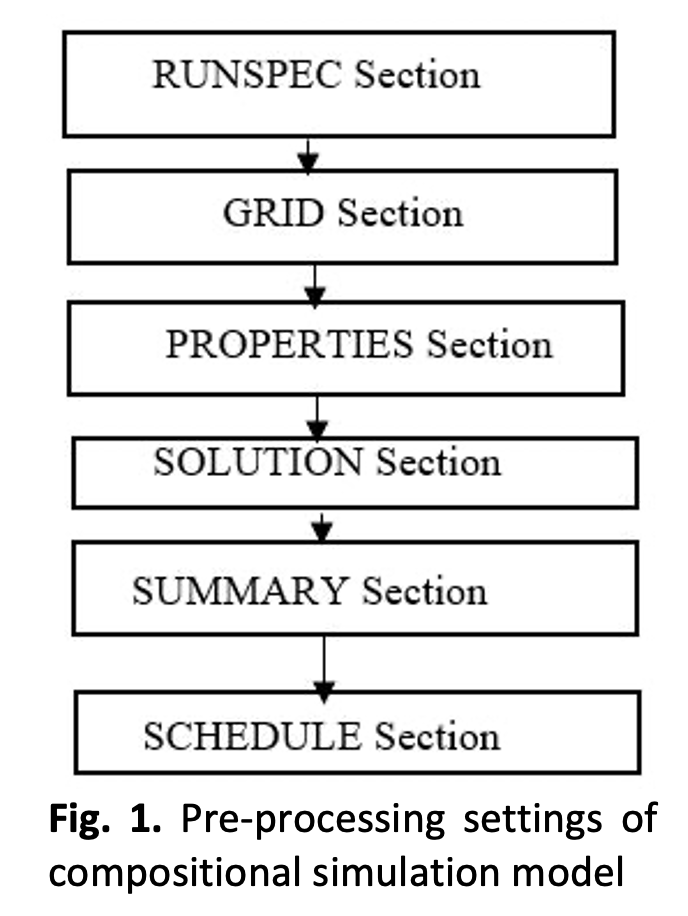Enhanced Oil Recovery through Carbon Dioxide Injection: A Compositional Simulation Approach
DOI:
https://doi.org/10.37934/araset.49.1.149160Keywords:
Viscosity reduction, Mobility of oil, Eclipse, Secondary recovery, Miscible displacement, CO2 sequestrationAbstract
Primary recovery techniques of hydrocarbons are insufficient to meet the ever-growing energy demand. This fact encourages researchers to establish tertiary hydrocarbon extraction techniques to increase production and meet the energy demand. The implementation of CO2 flooding has been widely regarded as a highly favourable approach for enhancing the recovery of both light and heavy oil resources. The rate of CO2 injection must be consistent so that viscosity decreases, and medium crude oil mobility is increased in accordance with production requirements. In this research, the compositional simulation model for CO2 flooding has been developed using Eclipse 2010.1 software with Lorentz-Bray-Clark correlation for enhanced oil recovery by reducing viscosity with constant CO2 injection. The compositional reservoir simulated model was executed from January 1, 2027 to January 1, 2050. From January 1, 2027 to January 1, 2048, the oil production rate remained constant. The concentration of CO2 in the oil phase has exhibited a notable increase, rising from 27.25% to 58.658% over the course of the twenty-three-year simulation period. This observation indicates that the oil phase has experienced a greater dissolution of CO2. Consequently, there has been a reduction in the viscosity of the reservoir oil, with a decrease from 0.126 centipoise (cp) to 0.088 cp, representing a 69.84 percent decline. Additionally, there has been an increase in the mobility of the reservoir oil. Furthermore, the enhanced oil recovery technique successfully achieved the recovery of 35.77 million stock tank barrels per day of medium crude oil. Finally, CO2 flooding reduces the amount of CO2 in nature, which is extremely significant from an environmental standpoint.




























